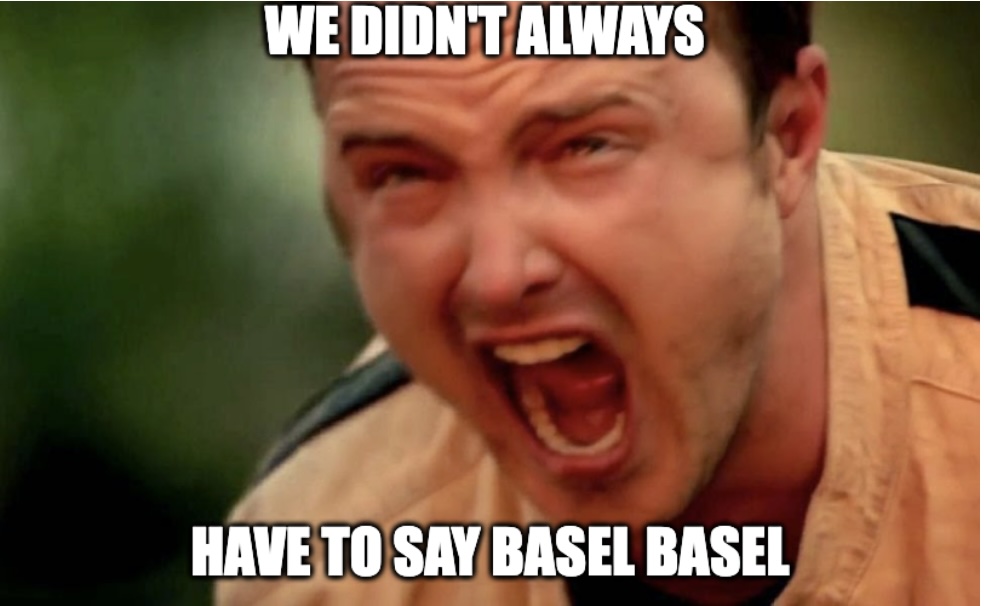
It’s 4AM, and I can’t go back to sleep because I’m replaying Kate Brown and Annie Armstrong’s conversation about Red Chip Art in my head and screaming at every other word. We’re clearly in a blind people and a painted Banksy elephant situation, so let me add another set of hands.
Armstrong and artnet can have full credit/blame for the term. But if it’s going to be a thing that we have to reorder our discourse around now, like Zombie Abstraction and the Cursed Vibe, let’s at least acknowledge the bleak reality: Red Chip Art is bigger, older, uglier, and more problematic than the Cybertruck it’s parading in on. And the forces that propel it are more entrenched in the so-called art world than many people want to admit.
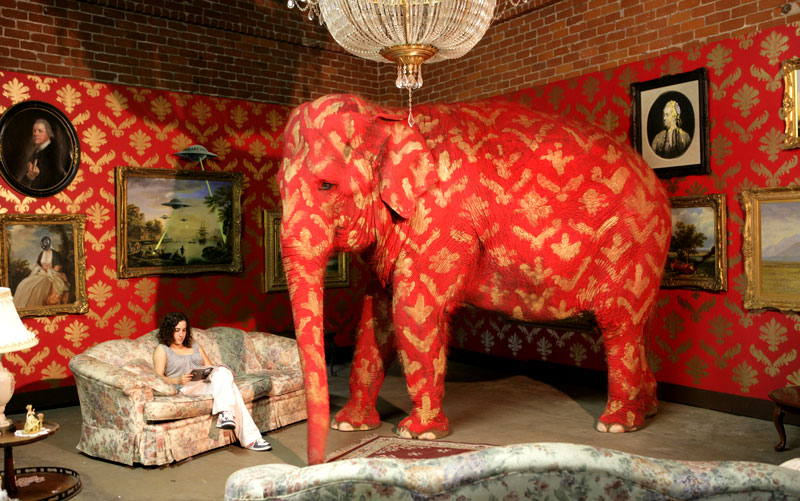
Bearbrick is a clue, and KAWS companions are a neighbor. The collectible toy market that came out of Japan, collabs used to be more transliterated as collabo, and artists, street and fine, were slotted in among luxury and entertainment brands that did branded figures. A lot of this culture emerged as Harajuku, fed by streetwear culture. Long before there was Bored Apes, there was A Bathing Ape. Kanye gets roped into this because you can trace it back to Nigo, the founder of Bathing Ape, who had an entire community of musicians around him, like Pharrell (where is he now?)
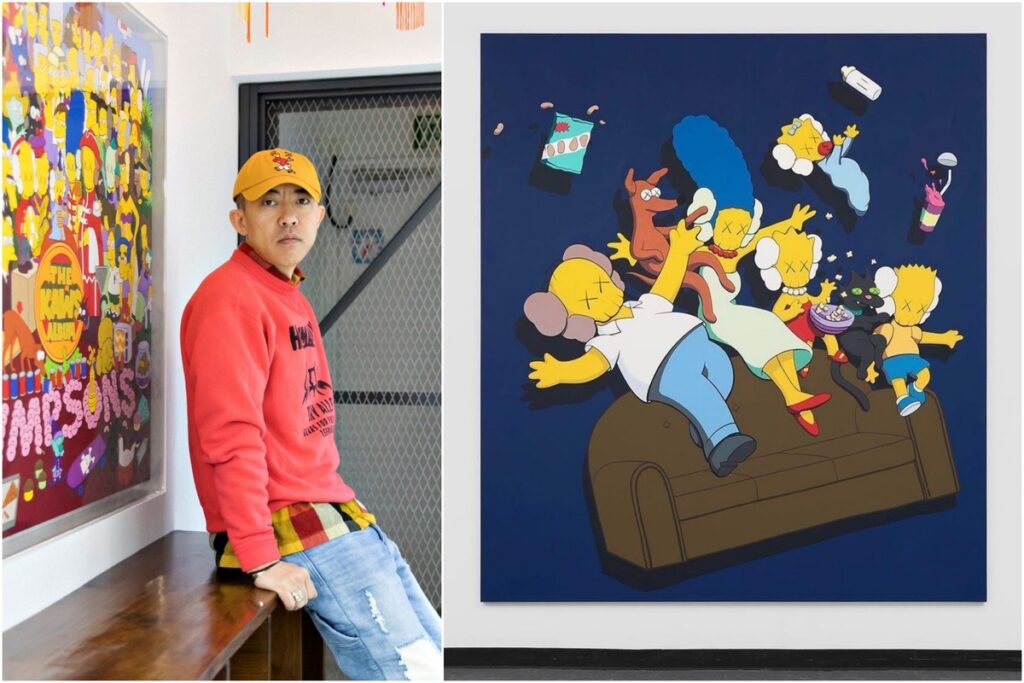
KAWS, of course, comes out of Brian’s street art culturejamming, and tracks a whole ecosystem of street artists making moves upmarket. When Nigo cashed out of his red chip art in 2019, his KAWS x Simpsons painting sold in Hong Kong for $17 million. Among the catalogue essays for his collection dump was an unabashed love letter to international corporate culture, written by Virgil Abloh (Kanye posse, remember), who saw corporate co-option of Black, street culture not as exploitation, but as a mark of success. The aspiration to sell out, to cash in, to hit, through the corporate embrace of underground/independent/street culture by the engines of consumer capitalism. To put it in Hammonsian terms, basketball was no longer the only higher goal.
The skater/sneaker culture/Hypebeast/Supreme industrial complex grew up on selling artificially limited amounts of signifiers of cultural capital, all with the same promise of cachet, exclusivity, and investment. It’s the same dynamic that fed Beanie Babies and Swatch collecting in earlier decades, but Charles MacKay had everyone’s number in 1841 when he wrote Extraordinary Popular Delusions and the Madness of Crowds. The churn & burn of art flipping in the so-called “real” art market is no different, and the point there is, this is truly a spectrum fed by similar cultural and psychological urges, and people differentiating themselves by tribe according to their own signifiers and rituals.
On a day my mother texts me about $3 Trader Joe’s totebag mania, I see Christie’s has flipped like 200 pink Himalayan crocodile Birkins [or is it one pink Himalayan croc Birkin flipped 200 times?] I mean, hello, the watch nerds have their own watch fair, in the same convention center, and it’s even called BaselWorld. If only anyone went to Basel literally any other week… [When cryptobros went momentarily crazy for watches, I could not stop thinking of how Rolexes were the KAWS sculptures of watches, and a hedge fund guy I used to know named Tiger scoffed that, “Wearing a Rolex says, ‘I’ve once had $1000.'”]
To the extent fine art/gallery art/museum art has ceded cultural significance specifically because of its perceived insularity and elitism [slur], the scaffolding of it persists. The thousands of people who went to Miami for Basel without setting foot in the art fair—or even knowing or gaf that there was one. Brands, DJs, luxury companies chasing the accumulation of money and attention, tertiary effects.
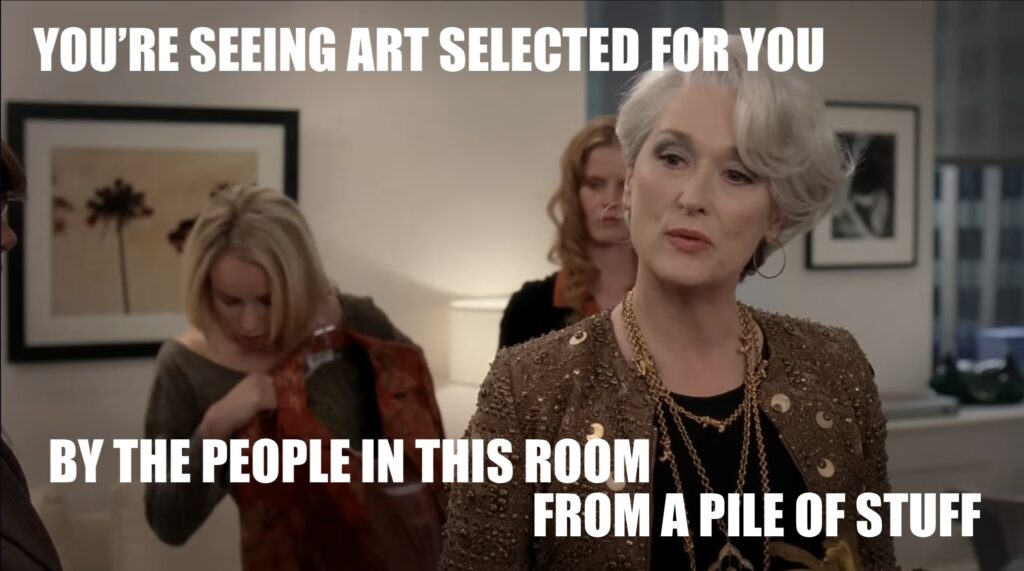
Art can’t run away from this entirely, because of fashion. [Let me brain dump this and fix it later, but I just realized this whole thing is Meryl Streep explaining cerulean blue to tragic clearance bin sweater wearer Anne Hathaway.gif, which, I gotta admit, is hard to beat.]
Fashion and art have had a long, tangled, and complicated relationship, a three-way with money. And luxury. And exclusivity. And discovery. And cultural influence and prestige. OK, now this is an orgy, how did this happen? There are people in fashion who care deeply about art, and there are people in fashion who care stupidly about art, but for the most part, they don’t care what you, in the art world, think of them.
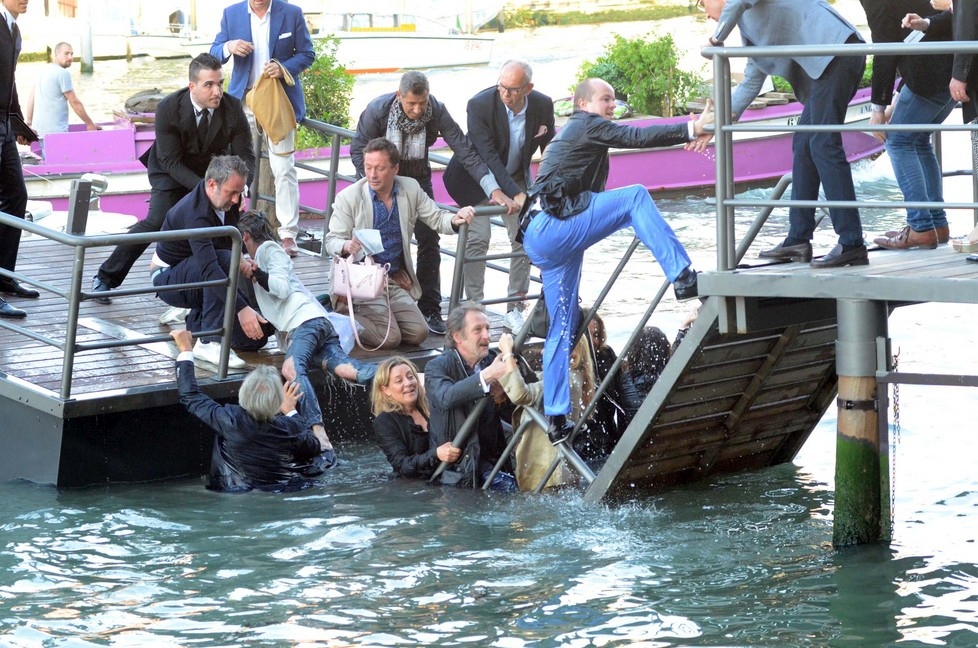
Mrs. Prada collects and has her Fondazione by Rem. Marc Jacobs and Murakami, and Prince, and Kusama, and Koons, and who did he work for? LVMH, which also has a foundation, by Frank. And Pinault, which owns all the other brands, and Christie’s, and the museums, and the palazzi. Abloh came up and into LVMH, where Pharrell is now (though with far less impact, partly because the model—and the world— have broken).

KAWS has been the punchline of art world snobs jokes about “collectors” for years, but that’s only because they got tired of making fun of Julian Opies. I cannot in a million years figure out how Daniel Arsham is a thing. His sculpture of Dr. Chan-Zuckerberg is only his second most cursed oligarch commission, that I know of, after whatever tf is going on in the gutted Tiffany store now. Are people laughing at the Arnaults or icing them out of whatever they want?
Supreme brought a lot of artists into their mix, and when the skateboards ran out, there were still ed. 300 prints to be had from Murakami and Hirst, but also whoever. Whoever now includes Damien Hirst, of course, but also Gerhard f’ing Richter, whose masstige Facsimile Objects are manufactured by HENI, founded by Richter whisperer and art lawyer Joe Hage. This ecosystem grew out of sneakerhead messageboards—in the NFT phase, HENI became a platform, offering secondary sales, and even storage, to help people manage their art assets, whether physical, digital, or phygital.
But then there’s social media. The emergence of Instagram as a platform, and Instagram artists as a genre, explains, I think, idiots from Alec Monopoly to Mr. Doodle. [My favorite thing about Monopoly is how the pandemic ruined his brand, because now everyone had to wear a mask.] But before then, Banksy was going old-media viral by selling to Brad Pitt and Angelina Jolie. What year was that LA pop-up with the painted elephant? And the self-shredding artwork that Sotheby’s stunt-auctioned?
Auction houses have been happy to service the churn for years, just check the last third of every day sale and online-only auction at Rago/LAModern/Wright20, and Phillips for the last fifteen years for Brainwash and everyone who worked at Kaikai Kiki.
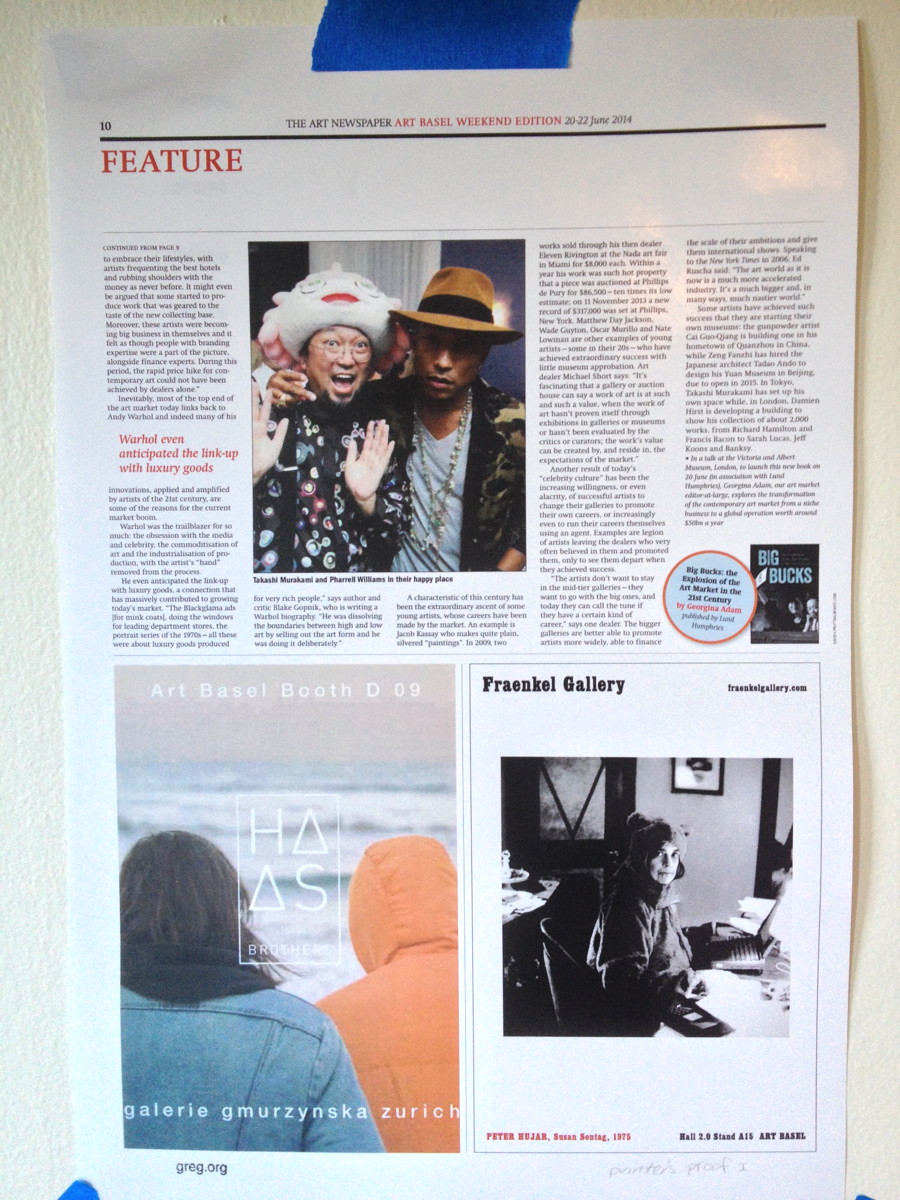
[Actually, Armstrong correctly called out Superflat, which was, ofc, Murakami’s entire thesis/manifesto, and his development of Kaikai Kiki as an art zaibatsu, with his own roster of next-gen artists, agency, brand collabs, and merch is more than 25 years old. Murakami was a classically trained artist who became a Japanese TV personality, then a breakout gallery artist, who modeled his practice after Warhol and The Factory, delivered a scathing and incisive critique of post-war American-dominated culture as mirrored in Japanese Superflat—and then he put a Vuitton boutique in his MOCA exhibition, and now roams the earth in a plush flower clown suit as a fucking oligarch minstrel.]
[gotta make the kid’s lunch, brb] [ok, i’m back]
Beeple’s biggest fan is somehow Caroline Christov-Bakargiev, curator of the edgiest Documenta since Okwui’s. KAWS was a punchline, but the curator who set his companion adrift in Hong Kong harbor was an insider, Germano Celant. And of course, Brian Donnelly has just had a critically acclaimed show of the KAWS collection at The Drawing Center. David Kordansky manages to run a respectable gallery and a flipper emporium at the same time. Emmanuel Perrotin sold a controlling interest in his gallery to a private equity firm, just like the art fairs did, so his program is, more than ever, literally driven, not its artistic relevance, but ROI. As if those things can even be pulled apart from each other.
When Tobias Meyer swooned about beauty, love, and a Warhol car crash painting, what was actually loved was that it sold for $110 million. The epic Richter in the YouTube still above was owned by racist asshole Eric Clapton. Armstrong makes an incredibly important point about red chip art and problematic politics when she said there are MAGAs who collect Joan Mitchell, too. And there absolutely are, but the problem [sic] isn’t Beeple vs Mitchell; it’s spending $60 million on one artwork.
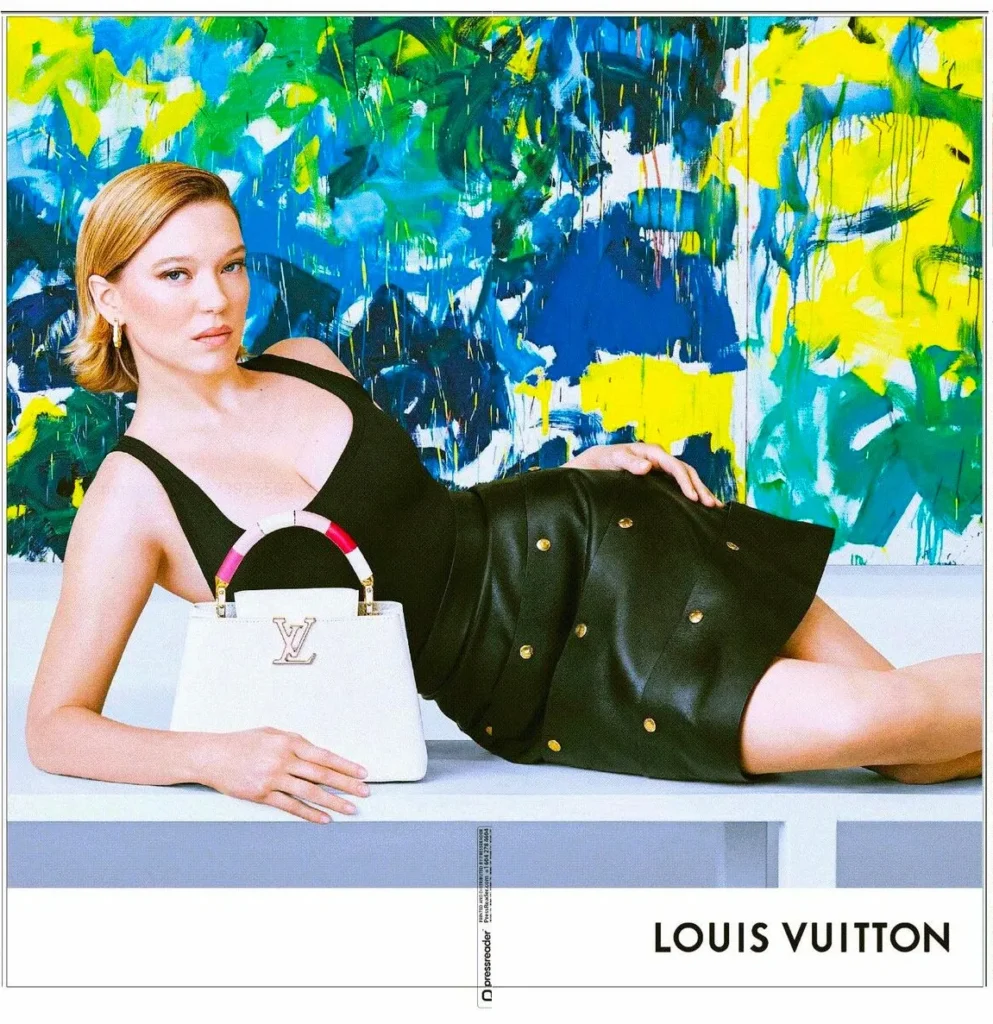
The art world that exists around the art market is dominated by the desires and taste and transactions of the richest people in the world. For a long time, many of them used art to elevate their status, their public reputation, their legacy. Some, like Arnault and Pinault still do it for the brand. Corporations used to do it, collecting art and funding museums, but I guess everyone ran the numbers, and figured the payoff is not there anymore, except for Uniqlo selling Uyghur sweatshop t-shirts. If the art world is selling respectability for the rich, there are whole swaths of people who are not in the market.
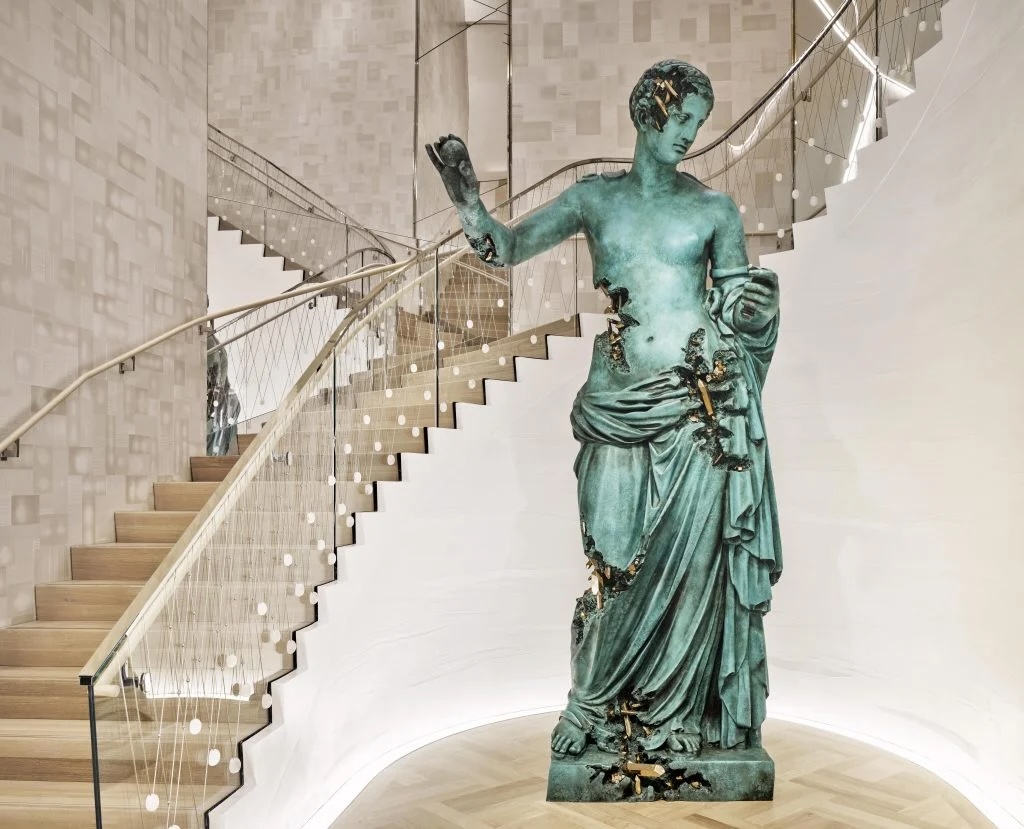
The most disturbing thing about the red chip art conversation is the idea that it’s rebellious, and doesn’t really have a politics. Because the same thing was said in 2016 about Red Scare, and we see how that turned out. As the Mitchell situation makes clear, the politics of red chip art and blue chip art are ultimately the same: art as a tool of capital, deployed for the benefit of its owners.
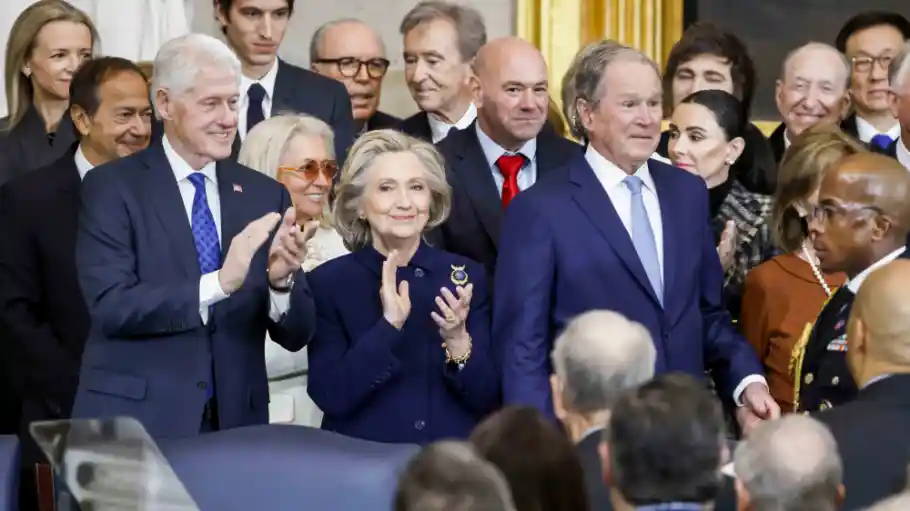
The siren call of rebellion, of populism, of assaulting boring institutions, is being made by oligarchs, technolords, and corporations who want to use art & culture to their own ends. It has been called a lot of things over the years as it’s morphed and metastasized, but now we can see it for what it is, and it is fascism.
